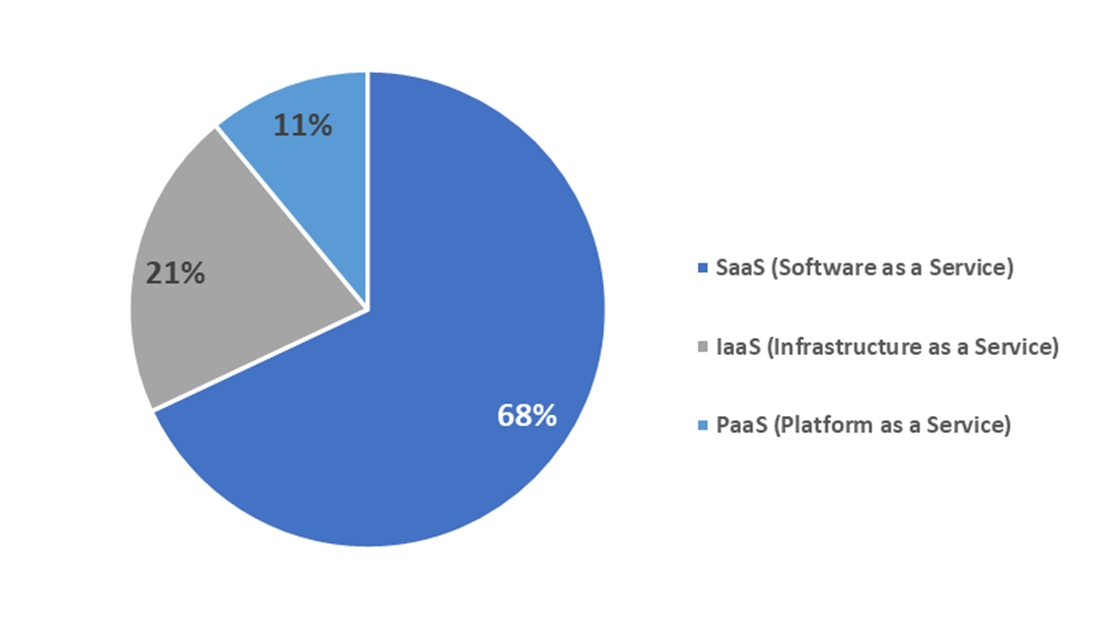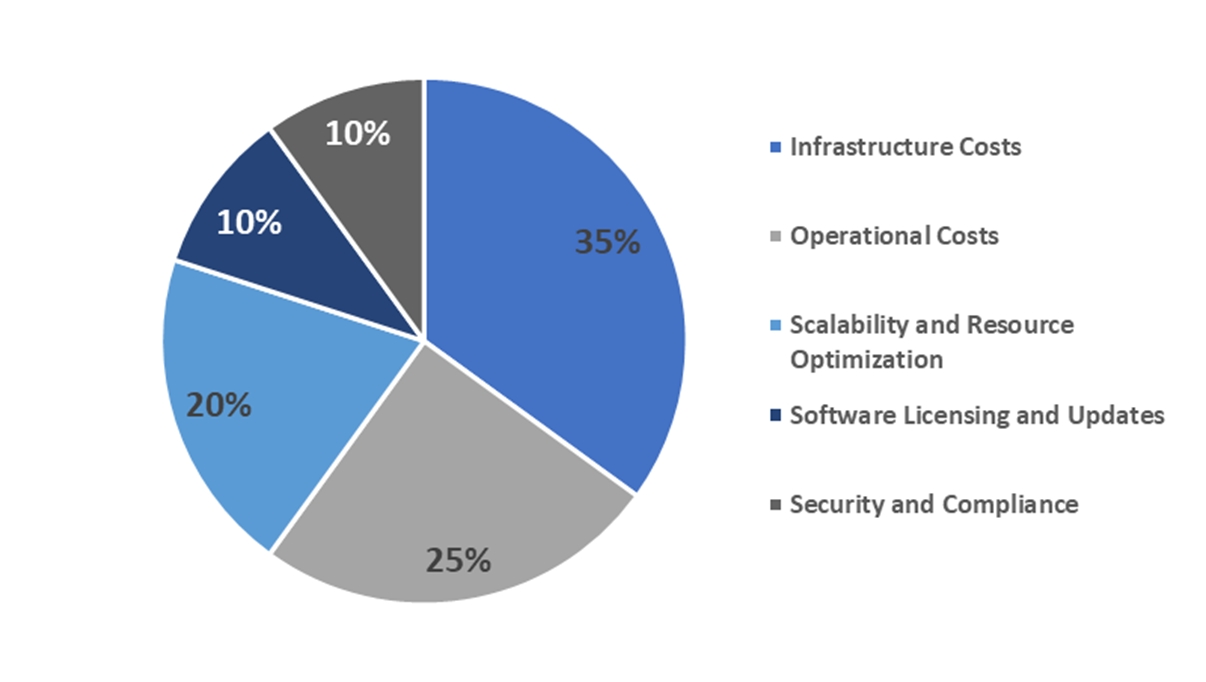Cloud Migration: Not an option but a necessity

In the rapidly evolving business landscape cloud migration has emerged as a pivotal strategy for organizations aiming to stay competitive and future-proof their operations. We focus on the myriad benefits of cloud migration, particularly from the perspective of C-level executives and VP‘s, providing insights into why embracing this technology is not just an option but a necessity for long-term success.
Cloud Adoption Statistics: The Big Picture
• Extensive Usage: A staggering 94% of enterprises utilize cloud services and 67% of their infrastructure is cloud-based underscoring the widespread adoption of cloud technologies. Out of 94% and approximate distribution among different cloud models is following:

• Cost Efficiency and Security: Enterprises have reported an 80% improvement in operation and a significant enhancement in online security post-cloud adoption.
• Accelerated Growth: In 2022 approximately 70% of organizations accelerated their migration to the cloud with 60% acknowledging that cloud capabilities played a crucial role in achieving increased and sustainable revenue.
Why Cloud Migration?
• Operational Efficiency: Cloud migration facilitates scaling resources on-demand reducing infrastructure costs and enhancing collaboration, thereby significantly boosting operational efficiency.
• Digital Transformation Stepping Stone: Around 82% of enterprises view cloud migration as essential for digital transformation allowing for future-proofing businesses and reducing costs.
• Cost Savings: Companies using cloud computing can save up to 20% annually on infrastructure costs. In 2021 25% of IT budgets were allocated to cloud-based services, and 84% of businesses that adopted cloud reported reduced computing costs.

These percentages are general estimates and the actual savings can vary based on the specific circumstances of each organization.
Emerging Trends in Cloud Migration
• Hybrid and Multi-Cloud Strategies: The adoption of hybrid and multi-cloud strategies is gaining momentum. This approach enables businesses to leverage the strengths of various cloud providers optimizing infrastructure to meet specific needs and unlocking new opportunities through technologies like edge computing and AI integration.
Practical Points for C-Level Consideration
• Enhanced Collaboration and Productivity: The average employee uses 36 cloud-based services daily reflecting the integral role of cloud services in enhancing teamwork and productivity.
• Investment Trends: 41.4% of global tech and business leaders plan to increase their investment in cloud-based services indicating a strategic shift towards cloud solutions in response to economic and market demands.

The transition to cloud computing is not merely a trend but a strategic necessity for businesses seeking to thrive in today’s digital world. For C-level executives and VP‘s understanding and leveraging the benefits of cloud migration is crucial for driving innovation, reducing costs and ensuring long-term business resilience.

